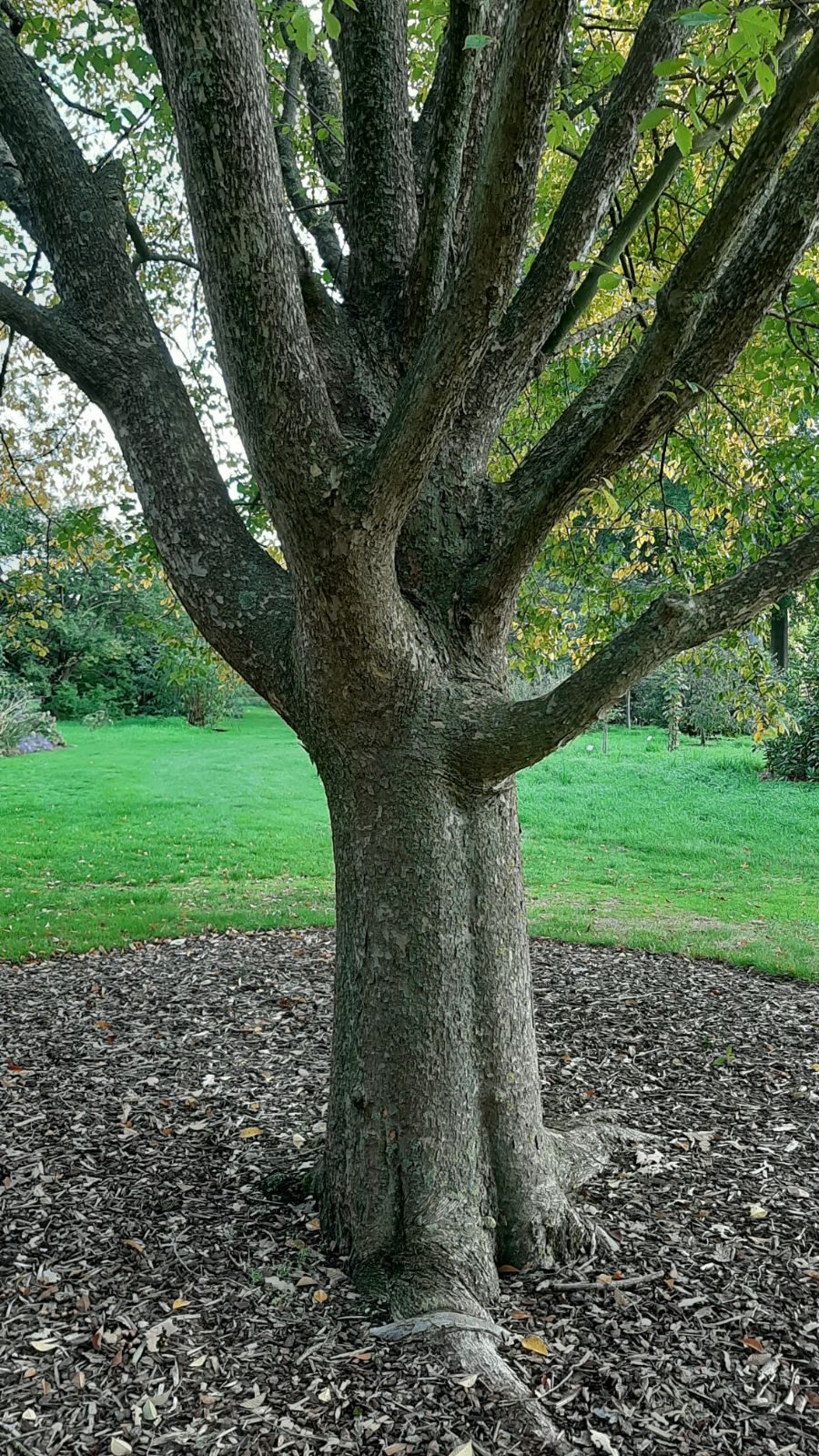Ulmus lamellosa
Credits
Article from New Trees by John Grimshaw & Ross Bayton
Recommended citation
'Ulmus lamellosa' from the website Trees and Shrubs Online (treesandshrubsonline.
Other taxa in genus
- Ulmus americana
- Ulmus angustifolia
- Ulmus bergmanniana
- Ulmus campestris
- Ulmus canescens
- Ulmus carpinifolia
- Ulmus castaneifolia
- Ulmus chenmoui
- Ulmus coritana
- Ulmus crassifolia
- Ulmus davidiana
- Ulmus elliptica
- Ulmus gaussenii
- Ulmus glabra
- Ulmus glaucescens
- Ulmus × hollandica
- Ulmus japonica
- Ulmus laciniata
- Ulmus laevis
- Ulmus macrocarpa
- Ulmus parvifolia
- Ulmus plotii
- Ulmus procera
- Ulmus pumila
- Ulmus rubra
- Ulmus serotina
- Ulmus szechuanica
- Ulmus thomasii
- Ulmus villosa
- Ulmus 'Viminalis'
- Ulmus wallichiana
- Ulmus wilsoniana
Shrub or tree 8–12 m. Bark grey or greyish white, peeling in irregular flakes around reddish brown lenticels. Branchlets brown to greyish brown, glabrous, no wings, sometimes with a corky layer. Leaves deciduous, 5–10 × 2.5–5.5 cm, obovate, upper surface scabrous, densely hirsute, lower surface scabrous and densely pubescent when young, 9–10 secondary veins on each side of the midrib, margins serrate or double-serrate, apex caudate to cuspidate; petiole 0.3–0.8 cm long. Inflorescences produced at the same time as the leaves. Perianth campanulate, six-lobed, pubescent. Samaras scattered at the base of branchlets, ± circular, 2.5–3.5 × 2–2.7 cm, densely pubescent, perianth persistent; seed positioned in centre. Flowering and fruiting March to May (China). Fu & Xin 2000, Fu et al. 2003. Distribution CHINA: Hebei, Henan, Nei Mongol, Shanxi. Habitat Mountain ravines, at c.1200 m asl. USDA Hardiness Zone 4–5. Conservation status Not evaluated. Illustration Fu & Xin 2000, Fu et al. 2003; NT890.
The bark of Ulmus lamellosa is a distinctive and ornamental feature, with light grey plates flaking off between rings of reddish brown or darker lenticels. It ought to be widely grown for this reason alone, but also has a nice rounded, shade-giving crown of dull green leaves that flush red and turn yellow in autumn, and seems, in addition, to be reasonably resistant to DED and not too badly attacked by insects. It is not tolerant of wet soils, however (Ware 1995c). It was introduced to the Morton Arboretum from China in 1990 and 1995, and was collected by the Sino-Scottish Expedition to Northwest Yunnan in 1995 (no. 205), from which source it is cultivated at the Royal Botanic Garden Edinburgh. It must have been introduced to the West earlier than this, however, as the University of British Columbia Botanical Garden received a plant from a cultivated source in 1983. There are a few other specimens scattered across our area, including individuals at the Strona Arboretum in Poland and at Arboretum Wespelaar. At Wespelaar a tree obtained in 1993 from Arboretum Waasland, Nieuwkerken-Waas, also in Belgium, has flourished, and is described by Koen Camelbeke (pers. comm. 2008) as a ‘really very handsome elm’ with a good shape, that has (so far) been free of disease.




